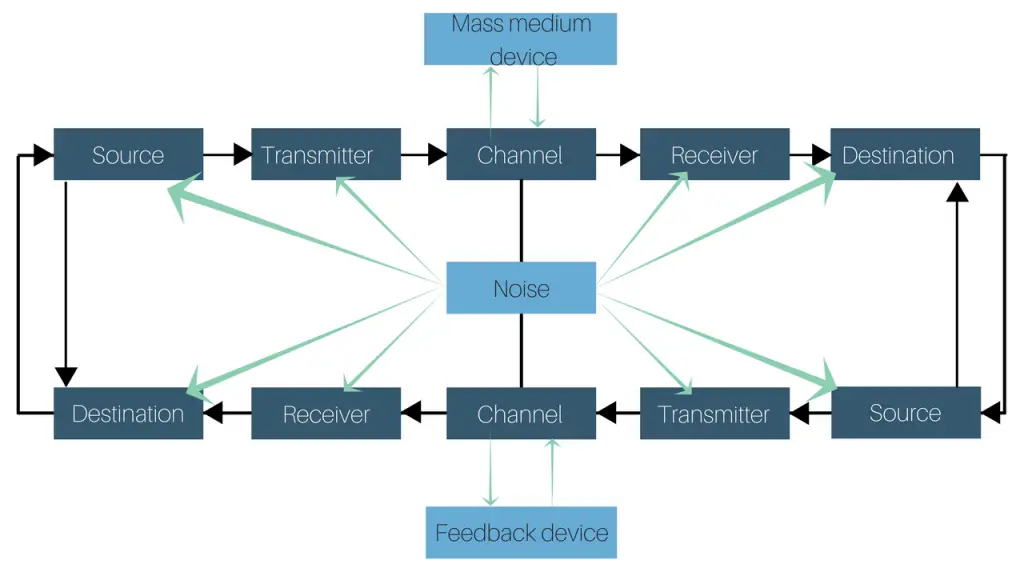De Fleur Model of Communication consists of a two way communication process where the receiver becomes the sender by providing feedback and by receiving the feedback, the sender becomes the receiver.
The model is named after American scholar Melvin Lawrence DeFleur. He was a professor of communications and social psychology with a PhD in Social Psychology.
This model is an expansion of Shannon and Weaver model of communication, which describes a one way communication with feedback mechanism.
It is also based on the Westley and Maclean model of communication which proposed a circular process of communication and feedback. Basically, De Fleur model is the combination of these two models.
So, we suggest you make yourself familiar with the two models first before diving into De Fleur model of communication.
Concept of De Fleur model

De Fleur model of communication describes of a mass media device in the communication process, which is circular in nature and is the first one to constitute a two way feedback process.
As any other model, the communication originates at a source. Then it is sent to a transmitter that operates signal, after which a channel transfers it to a receiver. Once the message reaches its destination, the receiver sends feedback. The feedback allows the sender to determine if proper communication has taken place.
Here, the receiver assumes the role of a sender by sending feedback while the sender becomes receiver by receiving feedback. Noise can occur at any stage in this model.
A feedback device is an important characteristic of this model. The feedback is given by a target audience, which is different from receivers, whether the message has been received or not.
De Fleur model Example
Let’s assume a brand wants to advertise its product to its audience. An advertisement is filmed and transmitted by a mass media device (television, internet etc.).
The message reaches the target audience through a receiver (television set, phone etc.). The target audience then provides the feedback through a different medium like social media or email.
The feedback from the target audience lets the brand know if their product is a success or not.
For instance, in January 2018, Swedish retail giant H&M circulated an online advertisement featuring a black boy wearing a sweatshirt that read, “Coolest monkey in the jungle.” The racial undertones of the ad ignited a widespread backlash on Twitter. After receiving an overwhelming negative feedback, H&M announced that the sweatshirt had been removed from their line of products.
